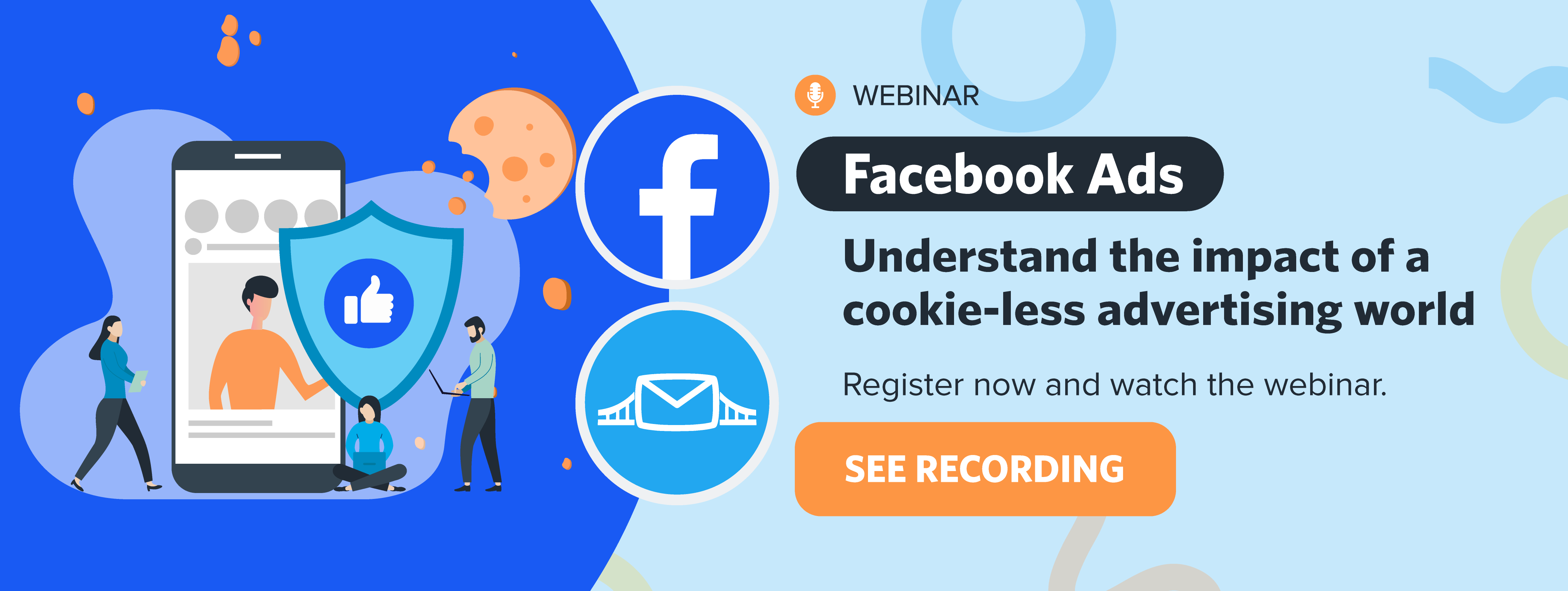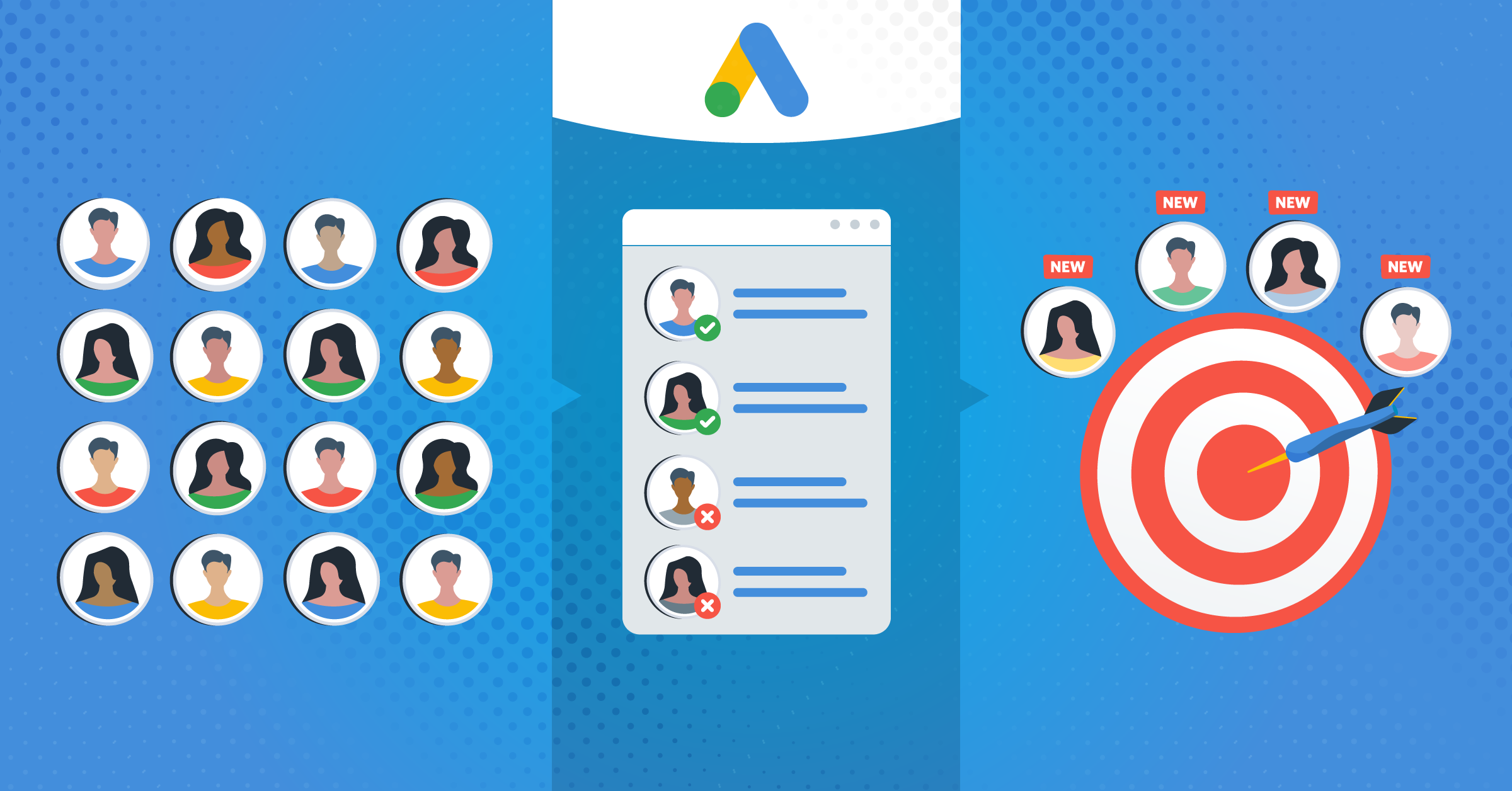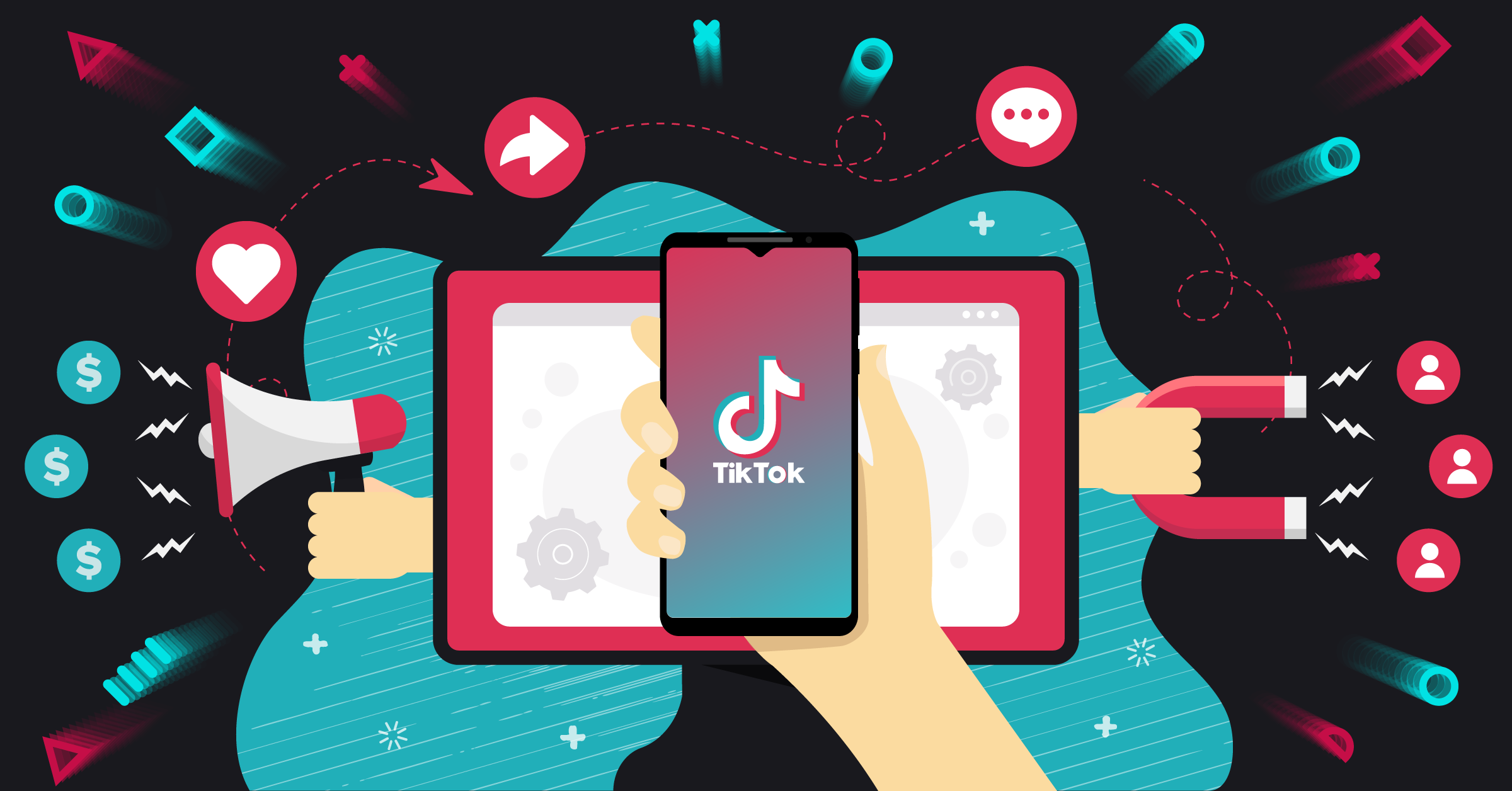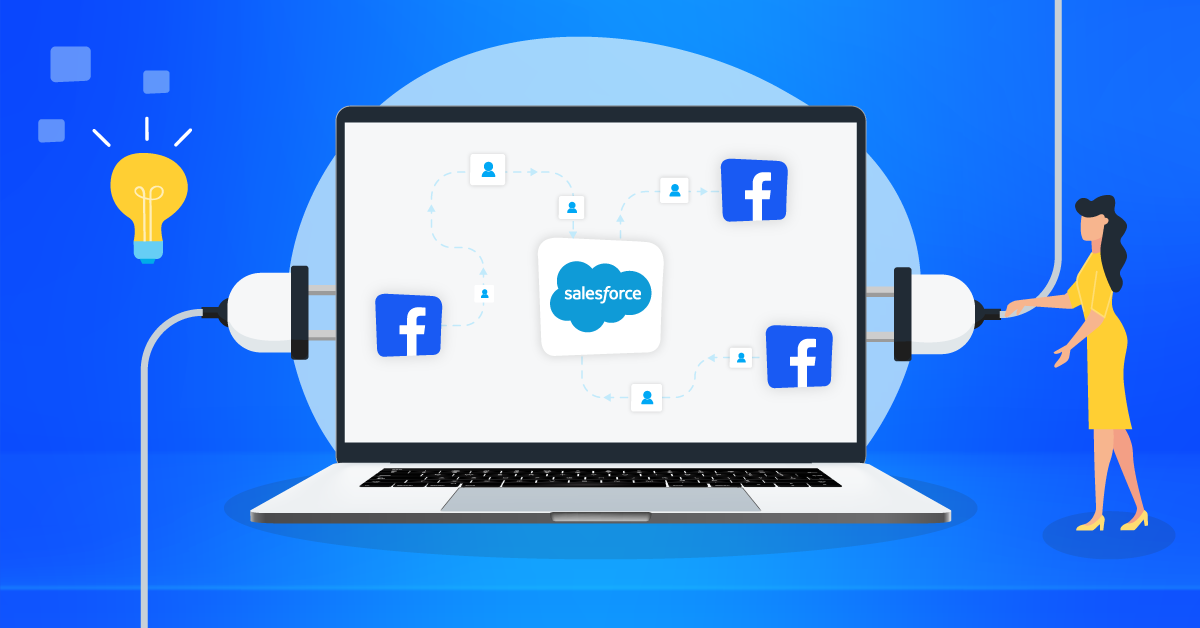
Are you running Facebook ads for your ecommerce business? If not, you might want to consider it.
Facebook ads can be incredibly beneficial for ecommerce brands, offering outstanding reach at a relatively low cost. In order to get these results, however, having the right strategies in place is important.
In this post, we’re going to dive deep into the most effective Facebook ecommerce strategies for 2024, including discussing tools and integrations and sharing some examples to inspire you.
Ecommerce Facebook ads strategy (& why you need one)
Having a clear strategy that accounts for your entire Facebook Ads funnel allows your ecommerce brands to take advantage of its current opportunities. This needs to account for;
- How you’ll attract cold users
- How you capture their interest
- And eventually how you can push them through the entire buyer’s journey until they’re ready to convert.
Most users, after all, are not going to convert the first time they see an ad from a brand, even if they’re interested. Users don’t know your brand, and they automatically distrust it on a subconscious level, and they haven’t been convinced that they really need the product.
Once they see the ad a few times, however, things can change. Your ad can feature a combination of user reviews, different visuals, and different pain points highlighted, they may be convinced and purchase.
And, what other features should your Facebook ads ecommerce strategy have for a winning game plan in 2024?
Among other things, it should focus on leveraging Facebook’s AI and machine learning capabilities to identify and segment audiences. You’ll need to use all you can to ensure your ads are tailored to the specific needs and interests of potential customers. Other key components include:
- Setting clear objectives for sales;
- Running brand awareness campaigns;
- Focusing on customer engagement;
- And, optimizing your ad content for personalization, and interactivity.
Another (often overlooked) ecommerce Facebook ad strategy is to adapt to ongoing changes in Facebook’s algorithms and policies. In addition to keeping your advertising practices ethical, including inclusivity and diversity in ad content are essential for building trust and maintaining compliance.
Using different strategies can help account for how to reach users at each stage of the digital sales funnel to drive more sales overall. That’s what we’re going to look at in the next section.
Benefits of Facebook ads for ecommerce
Facebook ads can be really helpful for ecommerce businesses. They let you show your products to a bunch of people who might be interested in them.
When running Facebook ads, you would want to target exactly the kind of people who are most likely to buy your stuff, like people who have visited your website before or those who like similar products.
This means you’re not just throwing your ads out there, hoping the right people see them. Instead, you’re making sure they do. Plus, Facebook ads can track how well they’re doing, so you can see if your money is being spent wisely and make any needed changes to get better results. For eCommerce brands selling on Amazon, leveraging a multi-channel marketing approach—including Facebook Ads and Amazon’s own advertising ecosystem—can be a game-changer. Working with an experienced Amazon marketing agency can help brands seamlessly integrate these strategies, ensuring maximum visibility and sales across both platforms.
However, you’ll need to connect your data technology stack to Meta in order to access these benefits. Integrations help connect the dots between different tools and platforms.
These connections make your advertising campaigns more precise and impactful, ultimately helping boost your sales and grow your business.
We’ll discuss more about this in just a few paragraphs. Now, let’s talk about strategy.
8 Best Facebook ads for ecommerce strategies (& examples)
Wondering how to run ecommerce Facebook ads for your brand? Well, there are many different Facebook ecommerce strategy options out there. But let’s take a look at 8 of the most effective strategies for ecommerce businesses in 2024 and examples of some of the best ecommerce Facebook ads for each.
1. Use Conversions API for CRM
The Conversions API for CRM is a native business tool that allows businesses to track data on their site, store it in their own servers, and then send it back to Facebook. It’s similar to how the pixel works to track data.
However, you get to sidestep the usage of the Meta Pixel altogether as you see fit since it’s a separate tool (though they can be integrated if you choose).

Tracking tools have always been valuable, but it’s become even more essential following the iOS 14.5 rollout and more recent updates. These regulations have directly impacted advertisers’ ability to track opted-out iOS users’ activity on mobile, as well as data tracking and retargeting in significant ways.
The good news is that Conversions API for CRM is incredibly easy to set up, particularly with the right integrations. LeadsBridge’s integration takes just a few minutes to set up, and it gives you full control over what data you want to share through the API.
2. Take advantage of different ad formats
Even with the privacy laws affecting ad data and deliverability, Facebook offers a plethora of options. Facebook tools can also help you analyze user history to determine which product they should show each user at each point in time. This increases relevance significantly, and historically, these types of ecommerce Facebook ads have great potential for success.
And even better; not only does relevance go up. You get to save a massive amount of time since you don’t need to manually create ads for every product you want to advertise in your inventory.
For instance, it allows advertisers to plug data from different products into a template, using formats such as Dynamic Ads.

Integrating Dynamic Ads with other tools like the Conversions API for CRM gives you plenty of options for how you want to create better ads. Apart from that, it lets you optimize the user data and sales that you get from them.
Speaking of mixing and matching Facebook tools, let’s not forget about Conversion leads performance goal.
Meta allows you to create conversion-focused campaigns that focus on specific actions like purchases. This feature uses your campaign’s existing dates and channels your targeting effort on people who are most likely to convert.
Isn’t this just an advertiser’s dream come true? The catch is that you need to connect your databases to Meta. Luckily, LeadsBridge integrations help you achieve this in just a few clicks:
The more data you feed into the system, the more accurate your targeting will be. The same goes for creating highly targeted custom audiences.
3. Don’t focus exclusively on retargeting
Retargeting is important. It allows you to recapture interested users, and it could result in significantly higher conversion rates (up to 70%).
You should not, however, focus exclusively on retargeting. If you do this, your Facebook Ads funnel for your ecommerce brand will suffer. You won’t be drawing enough people into the funnel in order to push them through it. The idea is that you can’t recapture users if you haven’t even captured them in the first place.
Make sure that you’re reaching cold audiences to create a wider top of your funnel. Opt for story-based, detailed product, or video content for a powerful first impression. Then, consider using Lookalike Audiences off of high-value custom audiences to connect with users most similar to people who are already customers.
Here’s an example of an ad from Alltrue that uses product features and storytelling to make a strong first impression. They detail the highlights of the product (dishwasher safe, stain resistant, versatile, space-saving) and then talk about how it comes from repurposed bamboo, so it’s saving the planet. It’s effective.
Best ecommerce Facebook ads from Alltrue
4. Use mobile-shot visuals
Yup, that’s right! You can skip the high-cost, professional-shot images and videos for at least a chunk of your ecommerce Facebook ads. Users are all about authenticity right now, and mobile-shot visuals that look like they came from a customer’s cell phone are all the rage.
Back in 2021, Facebook released an article, recommending that brands use mobile-shot images and videos for Stories Ads in particular. These ads strongly resemble user-generated content, even if they’re not. While it’s a stark shift from the uber-professional images that we’re used to, mobile-shot content is performing well across all devices right now.
Here’s an example of an ad from MiamiFruit that looks like someone snapped the picture with their iPhone in the best way possible:
Facebook ads for ecommerce example
Luckily, this content is cheap and easy to shoot, making ad scalability easy for your ecommerce brand. You can also team up with clients or influencers and enlist them to create mobile-shot video testimonials for you.
This is a simple but easy Facebook ecommerce strategy for your ads.
5. Consider mobile first for everything
You need to approach Facebook from a mobile-first perspective when running ecommerce Facebook ads. 94% of Facebook’s ad revenue comes from mobile ads, and that won’t be changing any time soon.
This means that the best ecommerce Facebook ads will be designed with mobile in mind. Here are some factors to consider:
- Optimize your landing pages for the mobile experience, too
- Put the most important information at the beginning of your copy, as text cuts off earlier on mobile than on desktop
- Use vertical, mobile-formatted images and videos
- Take advantage of Stories Ads on both Instagram and Facebook
This is a great ad example for ecommerce brands from Ka’Chava. It has a vertical video format, and the text is simple and mobile-friendly: “Hands Down: World’s Healthiest Breakfast!” It lets the video speak for itself.
Facebook ad for ecommerce brand
6. Use automation tools
While this may not seem like a high-brow strategy, using the right tools can revolutionize your ad creation and management process faster than you’d think.
LeadsBridge, for example, is an all-encompassing automation tool that can improve the creation process when it comes to Facebook Ads for ecommerce brands.
We offer integrations for Facebook Marketplace Ads, Dynamic Ads, Facebook’s Commerce Manager, and even Facebook lead ads.
If you are new to running ads across Meta technologies, take a look at these comprehensive guides to Facebook Marketplace and running high-converting Facebook lead ads.
Looking to have your product catalogs automatically updated on Facebook when they’re updated in WooCommerce or Magento? We can help with that.
Or, want to make sure that you’re retargeting users who have abandoned their cart right away with dynamic ads? We can help with that, too.
Check out our full list of Facebook integrations to see what’s possible.
7. Account for the impact of privacy regulations
All of your 2024 Facebook ecommerce strategies need to account for the most recent consent regulations, such as Apple’s user privacy and data use updates.
Imagine someone clicks on a mobile ad to your site but they’ve opted out of data tracking. Without a tracking system, there’s no way to know what those users did once they were on your landing page.
Maybe they converted. Maybe they came back two weeks later and signed up for your email. Either way, you may not get that data, and you likely won’t be able to retarget them.
New user privacy regulations are also going to impact ad optimization and deliverability. Facebook currently looks at user actions on and off the platform to determine who should see which ads. That’s why you need a more privacy-friendly tracking solution in place.
Make sure to use on-platform targeting, including video views, lead form submissions, and event engagement, in addition to pixel-based retargeting. You’re also going to want to take full advantage of Facebook’s Conversions API, and to use strategies like adding offers with custom coupon codes to track data more effectively.
8. Take the entire funnel into consideration
The last essential Facebook ecommerce strategy you must keep in mind in 2024 is to remember to account for the entire ad funnel.
Understanding how to run Facebook ads for ecommerce also means you know how to attract users, catch their interest, and push them through the funnel.
Here’s an example of what a Facebook ad ecommerce funnel may look like, with examples from GlobeIn:
a. Start with a video ad that tells your brand story, then retarget users who watched at least half of the video for the next campaign.

b. This next campaign should show users product tutorial videos, or relevant products with user reviews

c. Retarget based on clicks to show a lead ad or an ad with an offer or coupon code, whichever is more relevant

d. Have a retargeting campaign set to run based on abandoned carts

e. Once users convert, retarget them to remind them of the referral program, product upgrades, or additional sales

f. Create lookalike audiences off of your high-converting audiences to start the cycle over, giving you a continuous stream of users to push through the funnel
The best types of Facebook ads for ecommerce
The best ecommerce Facebook ads have a few common characteristics. They are dynamic, data-driven, and user-focused, maximizing ROI while meeting the evolving expectations of digital consumers.
Looking for more visibility? Here are the top three most effective types of Facebook ads for ecommerce:
Carousel Ads
The Carousel Ad format makes for the best Facebook ads for ecommerce. However, they are also great for Instagram, Messenger, and the Audience Network. These ads let you show off up to ten images or videos in one go while allowing you to tag each with its own link.
What’s more, you can ask Facebook to automatically arrange your carousel images for the best performance. Unless you’re telling a story in order when it’s best to turn off this auto-optimization to keep your narrative flowing the way you want.
There are many ways to create a Carousel Ad for ecommerce, but here are our top five favorites:
- Showcase Multiple Products: Use Carousel Ads to display various products or services in one ad.
- Tell a Story: Share sequences, tutorials, or engaging tips in a series.
- Offer Exclusive Promotions: Attract users with promo codes and let them explore products.
- Encourage Interaction: Use catchy headlines, descriptions, and CTAs to keep users swiping.
- Introduce Services or Features: Educate and persuade users with up to 10 slides of key information.
Ecommerce Facebook ad example using Carousel Ad format
Combining a seasonal holiday discount with a carousel format, BANGS Shoes taps into the hype for having the best deals of the year. The ad’s copy is straightforward, while offering a few options at once to the user, thanks to its formatting.

Dynamic Product Ads (DPA):
Let’s just put it this way: Dynamic Product Ads are tailor-made for ecommerce. If you have a product catalog, you can use this format to boost your sales. They are not just one of the best types of ads for Facebook. They also appear on Instagram and the Audience Network, and help you expand your reach to mobile apps, mobile websites, and videos beyond Facebook.
These ads are outstanding for both cold targeting and retargeting, and can be optimized using both the tracking pixel and the Conversions API we just discussed. If a user is viewing your site and looks at a product or even adds it to their cart but doesn’t convert, you can use dynamic retargeting campaigns to automatically show them the product in an ad.
These ads automate the promotion of your entire product catalog across Facebook products, so you don’t have to create a number of individual ads. Besides, they capture user intent signals from websites and apps, ensuring the right products reach the right people.
Here are some ways to use Dynamic Ads effectively:
- Connect with people: Users can follow your Instagram business profile to engage with your posts in their feeds, by sharing comments and content.
- Tell engaging stories: Use photos and videos to visually bring your business’s narrative to life.
- Measure impact: Measure how your Instagram activities contribute to achieving your business objectives.
Whether you’re new to dynamic ads or already familiar, this guide offers great tips and step-by-step instructions to help you get started.
Ecommerce Facebook ad example with DPA format
Lucy Desi Museum‘s campaign uses the Dynamic Ad format to introduce the top audience favorites while offering more options in the same theme.
The ad’s copy, in addition to the discount card, encourages users to swipe and browse other products in their catalog.

Collection Ads
For ecommerce businesses, Collection Ads have become the go-to format. It is an advanced advertising option that lets you create an engaging shopping experience for both your Facebook and Instagram customers.
Remember to use this format if you want to catch your audience’s attention when they are browsing and not searching. Also, they are perfect for people who are ready to make a purchase.
Many people discover new products and offerings through mobile videos. However, when it’s time to explore further or buy, they expect a smooth and fast-loading mobile experience.
That’s where the Collection Ad format comes in. It makes it possible for users to move from discovery to purchase in just a few clicks. When users tap on your Collection Ad to browse or learn more (depending on your CTA), they are directed to a fast-loading visual experience without leaving the platform.
This is supported by Instant Experience, a Facebook advertising feature unique to this format. So, does this feature make it the best type of Facebook Ad for ecommerce? That depends on what you are offering.
Let’s take a look at the top three ways to use Collection Ads:
- Instant Storefront: Show multiple products in a grid format.
- Instant Lookbook: Offer your products in action, create a digital catalog, and promote brand storytelling.
- Instant customer acquisition: Drive conversions on your mobile landing page, prompt specific actions, and finally, highlight your offerings with high-quality visuals.
Ecommerce Facebook ad example using Collection Ad format
As with any other Collection Ad, this campaign from Feroldi’s features a primary video or image, accompanied by three smaller images in a grid-like layout underneath. The copy is minimal since the visuals are the main bearer of the message.
The ad uses an engaging video format while making it easy to access products if they decide to do so.

How to get results for ecommerce with Facebook ads
To grow your campaign, focus on reaching new customers. Facebook has a huge number of users, making it a great place to find people who haven’t bought from you yet.
By targeting these new customers, you can really expand your ecommerce business on Facebook. Here are some quick tips on how to get good results for your ecommerce store with Facebook ads.
- Start by really understanding who your customers are and what they like.
- Use this information to target your ads better, making sure they reach people who are most likely to buy your products.
- Make your ads interesting with great pictures or videos of your products, and include clear, enticing messages.
- Your landing page should load quickly, display well on mobile devices, and provide a seamless shopping experience.
- Use Facebook Pixel and Conversions API for CRM to track visitors and retarget those who have visited but haven’t made a purchase.
- Run multiple versions of your ads to see which ones perform best.
- Try using different formats of ads to show your products’ benefits and how they work and share reviews from happy customers.
- Keep an eye on how your ads are doing, and adjust them if they’re not bringing in the sales you want.
Final thoughts
Facebook ads for ecommerce brands have so much potential to drive a high volume of sales at low costs. The scalability potential is exceptional; having the right strategies in place makes it all possible.
Go into your ad creation process with these eight strategies and your Facebook ad funnel in mind. Combined with some thorough split testing and a little creativity, you should be well on your way to high-converting ads.
Are you looking for more ways to streamline your ecommerce business, including with advertising, sales, and marketing automation features? Check out our ecommerce integrations here.

























